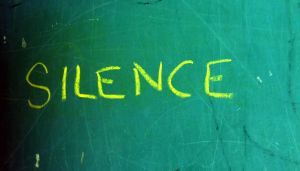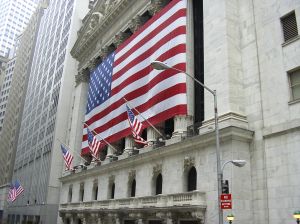Human capital or human capitalism has become the explanation of the labor market and earnings inequality put forth by economists. While not a theory of racial and gender inequality in the labor market, this line of reasoning has major implications for minority and gender disadvantages in the labor market.
Human capital is the education, skill levels, and problem solving abilities that will enable an individual to be a productive worker in today’s society. It contends that investment in education will improve the quality of workers and, consequently, increase the wealth of the community.
Human capital, as put forth by proponents such as Jacob Mincer (1962) and Gary Becker (1964), argue that inequality exists in the labor market because some workers are more productive than others. Productive workers are more productive because they have invested more in themselves in human capital that will potentially increase their future monetary income. If everyone invested the same amount of resources in human capital, the distribution of earnings would be exactly the same.
In short, inequality in the labor market occurs because (1) some people have more education than others, (2) are willing to invest more in their human capital, and (3) choose to work in jobs that pay higher monetary incomes than those who like being on the low end of the economic totem pole.
However, this mentality is one of the many short-comings of human capitalism. This theory does not take into account life altering variables such as racism, sexism, classism and massive amounts of inequality in the educational system. Because of these variables, Latinos and Blacks are three times more likely to live in poverty than Whites. Women account for two-thirds of the poor. Proponents of this theory would like to think that these individuals are incapable of achieving the same financial success as their better educated, wealthier counterparts and have not invested the proper amount of human capital to achieve success. This argument is aligned with Social Darwinism– survival of the fittest, the notion that the poor are biologically unfit to compete and are to blame for their own poverty stricken existence.
Individuals who have not been able to accumulate large amounts of human capital are not failures due to their lack of gumption but because of discrimination and an unequal educational system. The federal government’s continuing disregard for the overwhelming majority of its citizens has become more apparent as the incessant sufferings of the middle and working class are not only ignored but antagonized by politicians who want to gut Medicare, Medicaid and Social Security benefits in order to save money but extend tax breaks for the wealthy.
This is all done at the expense of the most vulnerable members of society: the children. One of the most astonishing and under-reported statistics in this country is that children are forty percent of the poor but is only twenty-six percent of the population. These children not only lack money but the opportunity for a decent education. Students, upon embarking on the first day of school, are immediately inundated into a government-employed tracking system that has been used since the 1920s when the government decided to separate students by academic ability (Spring). This system places students on predetermined paths based on subjective criteria, creating pathways that will inevitably socialize the students into their expected role in society. Infested with inequality and discrimination, this system degrades children based on their ascribed status (e.g. race, class, gender). These categorizations, for the most part, will determine who will eventually succeed in society and who will not and are based on laws riddled with negative perceptions. Children who are designated a lower track are usually minorities and from the inner cities of America.
The main shortcoming of the Human Capital Theory is the belief that education alone will end poverty. Even if there was a law that made it mandatory for every child born in America to receive a free college education, there would have to be enough jobs in the labor market for the influx of future college graduates. According to Spring, during the early 1970s, an educational inflation occurred when the labor market was flooded with college graduates and the occupational structure was not able to supply these individuals with jobs. As a result, people with doctorates were driving taxicabs and waiting on tables. In the end, the labor market proved to be the main factor in determining employment, not education (Spring 27).
Horace Mann’s noble, if misguided, idea that the equality of opportunity would reduce social tensions between the poor and the rich by instilling the belief in people that everyone has an opportunity to succeed has not yet come to pass, at least not in minority communities. Only a ninny would believe that the educational system in this country provides everyone with an equal opportunity for advancement and potential wealth. In Jonathon Kozol’s book, Savage Inequalities, he discusses the plight of students in several cities in America such as Chicago, New York, and Camden, New Jersey, who, because of their caste in this society, face horrific obstacles while trying to obtain an education. The schools these children attend are often overcrowded, unsanitary and unsafe, lacking in basic tools and textbooks for teaching. The conditions these students face are discouraging, oppressive, depressing, and disheartening. And it is no wonder that children in these districts drop out in such great numbers. Education should be equal and free regardless of class.
The education gap in the U.S., like the wealth chasm, is growing ever wider, and a decent quality education, the perennial dream of working and progressive people, is being undermined by conservative forces. Although free universal public education was adopted early in U.S. history, equal opportunity has never been realized. Since colonial times, education has been provided free of charge for most school aged children in local communities (excluding, at various times, slaves, Native Americans, migrants, pregnant girls, special-needs students, and other neglected groups), and have been primarily financed by local taxes and controlled by the ruling classes of local communities. These two features of American education, local financing and local control of schools, initially established and continue to maintain inequality in American education.
These reasons are just some of the short-comings of human capitalism. How can individuals build up their human capital when they are faced with an educational system that is inherently unequal in which wealthy communities have had abundant resources available for education while many poor communities have never had adequate funds? Although education is extolled as the key to success in this society, educational opportunities for the poor are limited. It seems as if the children of the poor are considered to be nothing more than fodder for low paying jobs, unworthy of social investment, while the children of the affluent have access to unlimited educational opportunities.
The Fallacy of The Human Capital Theory,




